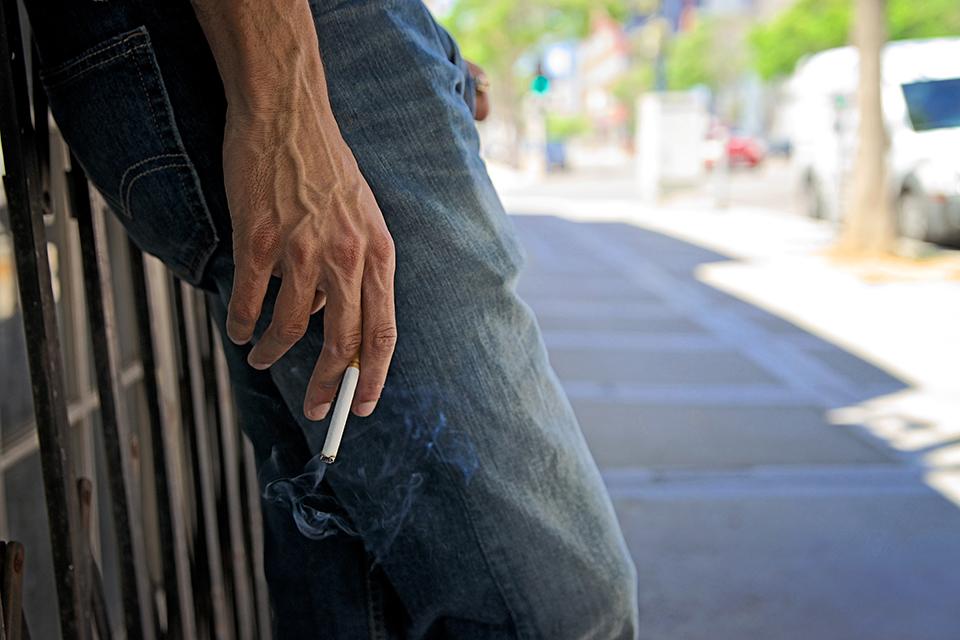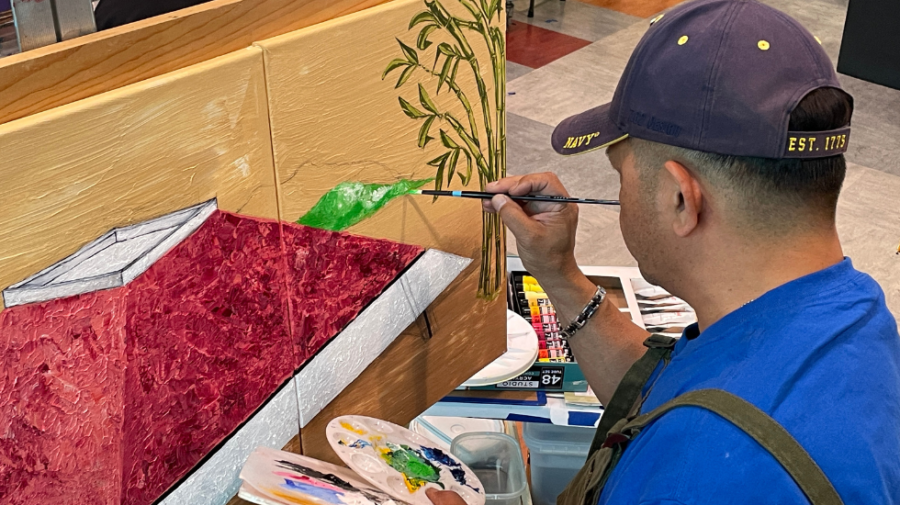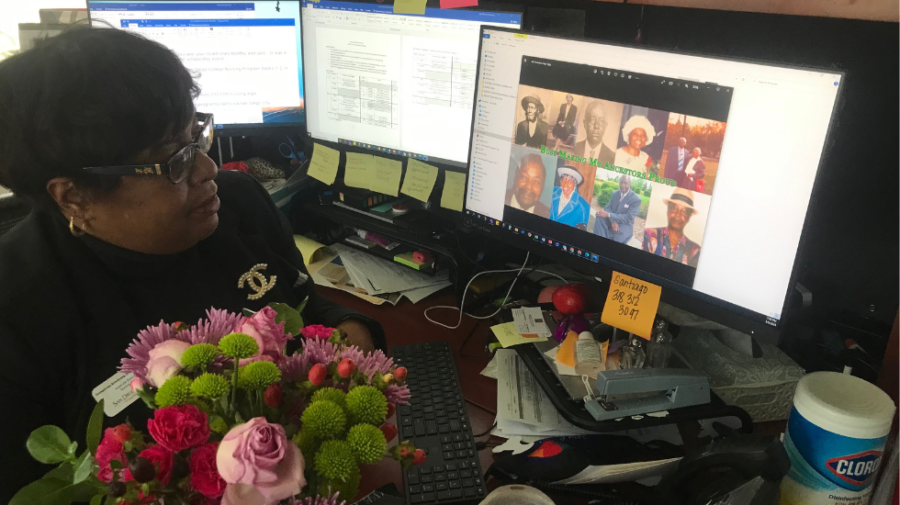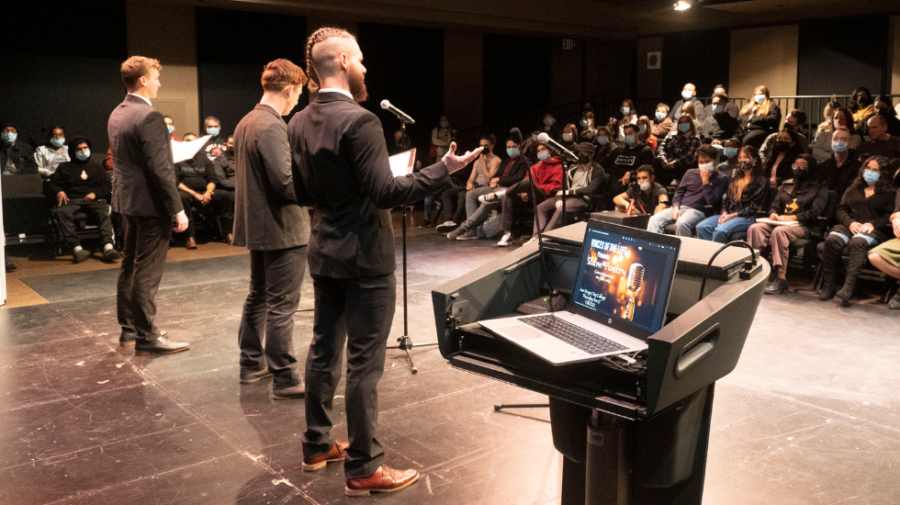It has been one month, 15 days and 10 hours since I had my last cigarette. According to the app on my phone, I’ve saved $75.91 since then by not inhaling 1.735 grams of tar into my lungs. This equates to about 217 cigarettes that I would have smoked at my normal rate (which was five per day at a cost of $7 a pack) over the last six weeks.
Smoking cessation apps are popular among those trying to kick the habit, but that doesn’t mean they’re effective tools for everyone. The information is supposed to be helpful, but to me it just downplays my smoking addiction and makes me wonder whether the damage from cigarettes on my body is great enough to warrant quitting. To an addict like myself, 200 cigarettes over six weeks seem reasonable.
What I do find useful when quitting is doing a Google image search for “effects of cigarette smoke” every time I have a craving, or knowing the health benefits that are experienced as they occur. Did you know that 24 hours after you kick the habit, your risk of a sudden heart attack decreases?
Like most millennials, I expect instant gratification or I lose interest almost immediately. Hitting constant markers of success — like senses of taste and smell returning to normal, followed by increased lung function — are the only thing that remind me I’m doing something good. And I need that. It feels like winning a video game where after short periods of time I’m unlocking these new achievements. If it weren’t for this app on my phone constantly telling me that my body is getting healthier, I probably wouldn’t notice. This opens up all kinds of questions about the western world, technology, and if one of these things puts us more or less in touch with ourselves — but I’ll save that for a more qualified authority on the matter.
My experience is that it is easy to forget to care for your body when you’re constantly balancing work and school while trying to maintain some sort of life any place in between. A cigarette can be an excuse for a 10-minute break that we otherwise might not be able to give ourselves. For me, it became a crutch that hindered the development of healthier methods of stress relief. Nonsmokers could take a deep breath and remain calm in the face of a hectic situation, but I had to remove myself and pollute my body for 10 minutes before I could be rational. In an increasingly anti-smoking world, this just wasn’t a good way to live. Never mind the argument against smoking that we’ve all heard before. If you grew up in the 1990s like I did, you’ve become numb to warnings. Cigarettes cause cancer, make breathing more difficult, smell bad, yellow teeth and all that, but what is truly problematic about it is that needing to smoke has become an inconvenience in a time when smoking isn’t allowed in any public space.
Young adults everywhere have bought into the electronic cigarette craze to cope with anti-smoking legislation, and it makes sense. E-cigarettes don’t have the same pungent, lingering smell, they are easily hidden, and offer more options for customization such as flavors and nicotine levels. I even have a friend who successfully used e-cigs to gradually lower her nicotine levels until she was no longer dependent on the chemical, and was able to quit smoking entirely — but she is a rare exception. Other smokers, such as myself, see the e-cigarette as a solution to not having to go outside or break from whatever they’re doing to get a fix. Rather than pop outside for a quick smoke break, we can now puff away inside all day while writing essays at home.
What is particularly concerning about the e-cigarette craze is how little we know about their long-term effects. They’re still delivering an extremely addictive substance, now at potentially a higher rate, through a device that has been on the market for only a few years. There are no long-term studies on the health effects of e-cigarettes and there are currently no regulations by the Food and Drug Administration on e-cigarettes. Even if there were FDA regulations on what e-cigs were allowed to contain, most of them are made in China where there is even less concern for public health than there is in the United States.
According to the University of California, San Francisco’s Center for Tobacco Control Research and Education, there are 10 chemicals found in e-cig vapor so far that are known to cause cancer and reproductive harm. These chemicals have been identified as causing harm to both the smoker and secondhand smokers. Contrary to popular belief, e-cigarettes do not deliver pure nicotine the same way cessation aids such as patches or gum would, and that is why organizations that help smokers kick the habit don’t recommend using them.
I remember inhaling significantly harder from an e-cig than I ever did with a normal cigarette because I couldn’t feel anything. All I ever got from it was a constant headache, and a light cough. It occurred to me that if I couldn’t feel what inhaling this chemical cocktail was doing to my body, then I had no way of knowing when to stop. This was concerning enough to deter me from further use, but other users persist.
According to a New York Times article published in March, reports of nicotine overdose have been on the rise, which reflects the trending e-cigarette use in the United States. I had no idea you could overdose on nicotine, but when you’re dealing with a toxic, concentrated liquid substance, accidents are bound to happen. Someone even injected nicotine to commit suicide in 2011, so even if you were inhaling the drug in its purest form, it could still put you at risk.
The New York Times reported that: “Nationwide, the number of cases linked to e-liquids jumped to 1,351 in 2013, a 300 percent increase from 2012, and the number is on pace to double this year, according to information from the National Poison Data System. Of the cases in 2013, 365 were referred to hospitals, triple the previous year’s number.”
It’s really quite simple — there are no easy ways out of nicotine addiction. I’m sorry, but there isn’t a healthier alternative and at some point all of us smokers do need to suck it up and just quit. It’s not about trying to live longer and sometimes its not even about being a health-nut, its just about functioning. When you age the effects of smoking — even if it’s just on the weekends, at shows in bars with your friends — become more noticeable. When I was 21 years old, I rode a bike everywhere and could hike all day at 10,000 feet above sea level, and still smoke while doing it. I was a kid with a lot of energy and a lust for life, but smoking over time drains that from you. As we age, our bodies react differently, and suddenly the dependency I developed when I was young became less of a commodity I enjoyed and more of a requirement for functioning. I am a firm believer that it is healthy to question any substance we feel we cannot live without, and that is what I was doing when I made the choice to quit smoking. It has made me a stronger person to push through the cravings and learn how to live differently.
This is my third attempt at quitting smoking, which makes me an expert. I can quit cold turkey for exactly nine months, until something like a break-up or finals makes me miss my old friend, nicotine. So this time I tried something different. I joined a cessation group called Commune Wednesdays. The idea is simple: 15 young people have a weekly meeting in a bar to help each other quit smoking in an environment that makes them want to smoke. That way, they can break that association. Free nicotine replacement therapy is provided to those who want it, along with support from professionals. Oh yeah, we also get paid since this is part of a research study. For every week we breathe a lower level of carbon monoxide into a device called a Smokerlyzer, we get additional money. This provides even more of that instant gratification I love so much, along with cash incentives.
Commune Wednesdays have done a few things for me that have made this round of fighting nicotine addiction feel like it is my last. The group has provided a wealth of knowledge and resources that I didn’t have before. They’ve also provided a sense of community, where I feel inspired to stay strong because I don’t want any of my new friends to give up either. We rely on each other and can talk about the challenges or setbacks without fear of judgment — and that is really key to winning this battle against the tobacco industry. It shouldn’t be a fight to get students, or your friends or family members or anyone else to stop smoking because it is gross. It should be a problem we look at as a community and try to figure out what we can do to overcome it.
As part of its Step Up to Live Well partnership with the county, San Diego City College has declared November 2014 Smoking and Substance Abuse Awareness month, and will honor the American Cancer Society’s Great American Smoke Out cessation campaign as part of that.
For more information on upcoming Step Up to Live Well events at City College, visit www.sdcity.edu/stepuptolivewell. For information on Commune Wednesdays, visit www.jointhecommune.com.








